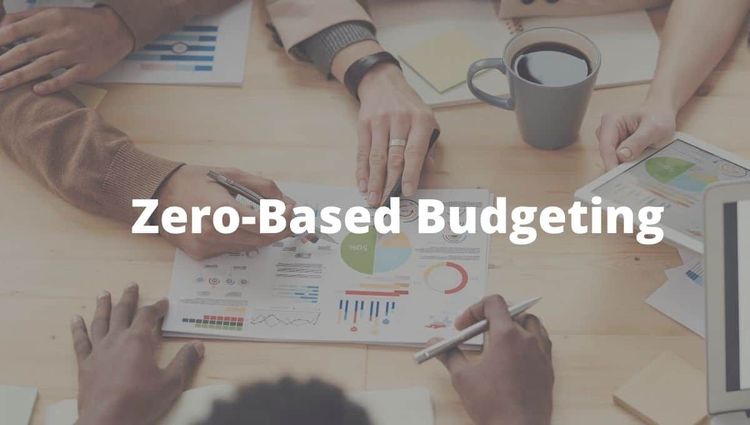Saving money and maintaining control over finances are increasingly important goals for many individuals and households. However, traditional budgeting methods may not always feel effective or personalised enough to meet every financial situation. This is where zero-based budgeting becomes crucial. Zero-based budgeting, recognised as one of the most dynamic, precise, and efficient approaches to money management, provides a clear path towards meeting savings targets and attaining financial peace of mind.
This budgeting system may sound intimidating or complex at first glance, but it’s actually designed to simplify and tailor your budget so that every dollar you earn is given a purpose. Whether you’re new to budgeting or looking to overhaul your current financial strategy, understanding zero-based budgeting could be the key to saving more, spending smarter, and gaining greater control over your financial future.
The Concept of Zero-Based Budgeting
Zero-based budgeting fundamentally focusses on achieving a perfect balance between your income and expenses. The principle is simple yet powerful—you allocate every dollar to a specific category within your budget until you have "zero dollars" left unassigned. This doesn’t mean you’re spending every dollar you earn, but rather that each dollar has a clear job to do.
For example, if you earn $4,000 per month, you’ll plan out exactly how that $4,000 will be distributed—covering necessities like rent, groceries, and utilities, as well as savings goals, debt repayment, and discretionary spending. The goal is to be fully intentional with how your money is used. Zero isn’t just a number here; it’s a mindset that encourages complete accountability and purpose for every cent of income.
How Zero-Based Budgeting Differs from Traditional Budgeting
Traditional budgeting often relies on rough estimates or set percentages to determine spending across categories. While rules like “spend 50% on needs, 30% on wants, and 20% on savings” provide guidance, they can feel too rigid or irrelevant for individuals with fluctuating incomes or unique financial priorities.
Zero-based budgeting allows you to create a new budget each month, taking into account your actual income and expenses at that particular time. You aren’t bound by arbitrary percentages or the patterns of previous months. Instead, you customise your budget to align with your current financial situation and priorities. This approach gives you more clarity and ensures nothing gets overlooked. Every expense is accounted for, hidden spending habits are revealed, and the process becomes more personalised than traditional methods.
Benefits of Zero-Based Budgeting
Zero-based budgeting offers a variety of benefits beyond simply saving money. It provides you with deeper awareness of where your money goes and encourages disciplined spending. By forcing you to think critically about each expense, you naturally begin identifying areas that can be reduced or optimised.
One of the major advantages of zero-based budgeting is its flexibility in times of financial fluctuation. If your income changes or unexpected expenses arise, you can quickly adjust and reassign funds without losing track of your goals. Additionally, this system allows for greater focus on financial priorities, such as paying off debt or building an emergency fund.
For those working toward big-picture savings milestones—like buying a home or building a retirement fund—zero-based budgeting ensures that these goals are an integral part of your financial plan every single month. It’s about mindfulness, intention, and making every dollar work harder for you.
Steps to Implement Zero-Based Budgeting
Getting a clear picture of your income and expenses is the first step in implementing zero-based budgeting. Start by writing down your monthly income and listing all of your expected expenses, including fixed costs like rent or utilities and variable costs like dining out or entertainment. Then, assign every dollar from your income to a specific category. Remember to include categories for savings, investments, and debt repayment—not just spending! The aim is for your income minus your expenses to equal zero.
Once your initial budget is in place, track your spending throughout the month to ensure you’re sticking to your plan. Adjust as necessary to ensure unplanned expenses don’t derail your financial goals. While it may take a few months to perfect this system, consistency is key—and the effort you put in will pay off through greater financial control and increased savings.
Real-Life Examples of Zero-Based Budgeting Success
Countless individuals and families have transformed their financial habits using zero-based budgeting. Take Sarah, a college graduate who used the system to pay off $30,000 in student loans within three years. By allocating every available dollar toward debt repayment while still covering her essential expenses, she achieved financial freedom faster than she thought possible.
Another example is the Johnson family, who needed to save for a down payment on a house. With three kids and a limited household income, they thought their goal was unattainable. However, zero-based budgeting encouraged them to redirect funds from non-essential spending toward savings. Within two years, they had saved enough to buy their dream home. These success stories are reflections of the power of intentional budgeting. When every dollar has a purpose, even the biggest financial goals feel within reach.
Common Challenges and How to Overcome Them
Transitioning to zero-based budgeting isn’t always smooth. One common challenge is the time commitment associated with building and maintaining a budget. However, with digital tools and mobile apps designed for budgeting, the process has never been more efficient or convenient.
Another obstacle is learning to anticipate irregular or seasonal expenses, like car repairs or holiday shopping. To overcome this, consider creating “sinking funds”—small amounts of money saved monthly for these predictable yet irregular costs.
Perhaps the biggest hurdle is the discipline required to stick to the plan. It’s tempting to dip into categories meant for savings or debt repayment, but staying consistent is crucial for long-term success. Regularly revisit your goals and celebrate small wins to maintain motivation throughout the process.
Conclusion
Zero-based budgeting is more than just a financial strategy—it’s a mindset shift that empowers you to control your money. By giving every dollar you earn a purpose, you create a path toward financial security, freedom, and peace of mind. If the idea of managing every penny feels overwhelming, start small. Begin by assigning high-priority allocations, such as rent and savings, and gradually build out your budget from there. Once you follow this approach, you may find it to be one of the most rewarding financial habits you’ll develop in your lifetime. Take the first step today, adopt zero-based budgeting, and unlock a smarter way to save more!




